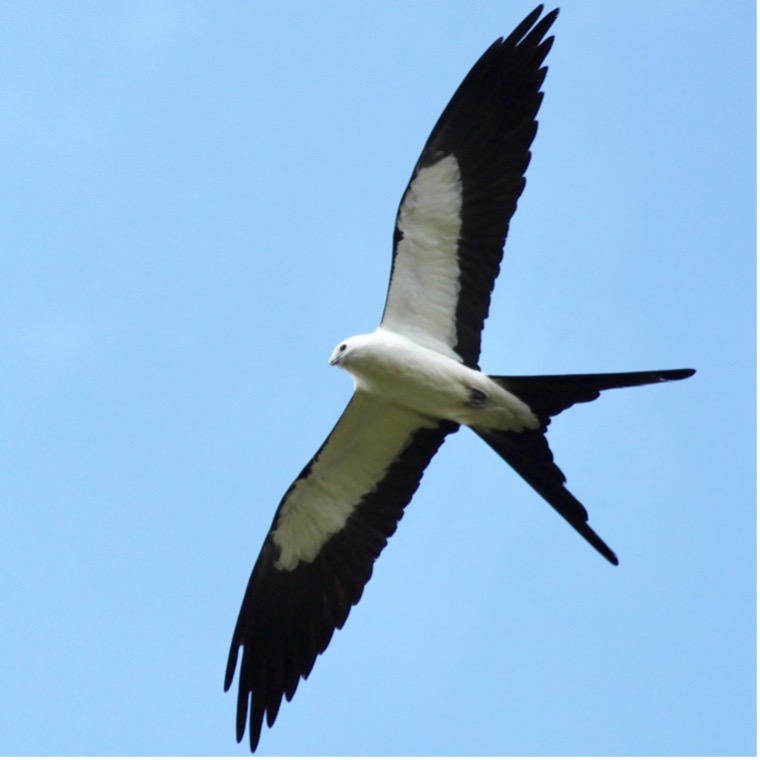
The Swallow-Tailed Kite: A Graceful Visitor to Verandah’s Skies
Spring in Verandah brings a welcome sight to bird lovers and nature enthusiasts—the return of the magnificent swallow-tailed kite. These striking raptors, with their bold black-and-white plumage and unmistakable forked tails, soar effortlessly through the sky, gliding and swooping with sheer elegance.
Arriving in late March/early April after a long migration from South America, swallow-tailed kites make their presence known as they ride the warm air currents above our wetlands and woodlands. Unlike the more aggressive hunting styles of hawks and eagles, these birds of prey have a uniquely graceful way of catching their meals. They skillfully snatch insects, small reptiles, and even baby birds from treetops—often in midair.
If you happen to glance up on a sunny morning or late afternoon, you might be lucky enough to witness a group of kites gliding together in synchronized flight. They rarely flap their wings, instead tilting and twisting their bodies to navigate the sky with astonishing precision. Their aerial displays are mesmerizing—a true gift for those who take a moment to look up.
As summer turns to late July and August, these elegant birds begin their southbound journey once more, leaving behind the peaceful silence of Verandah’s blue skies until they return again in the spring.
Some Interesting Facts About Swallow-Tailed Kites
1. Their deeply forked tail isn’t just for show—it helps them maneuver with extreme precision in the air.
2. Unlike hawks and eagles, swallow-tailed kites are mostly silent flyers, rarely making vocalizations except during nesting.
3. They build their nests in the tallest trees; often choosing cypress, pine, or other large trees near wetlands.
4. They are found as far south as Argentina when they return to South America.
5. Swallow-tailed kites drink water by skimming the surface of lakes and rivers while in flight, much like swallows.
6. Unlike most birds of prey, swallow-tailed kites spend very little time perched, preferring instead to stay in constant flight.
7. These birds are often used as a symbol of “Wild Florida,” as they thrive in large, undisturbed wetland and forested areas.
8. Swallow-tailed kites are nurturing parents – they lay one to three eggs per clutch, which both parents take turns incubating for about 30 days.
9. While common in Florida and nearby states, they are rarely seen beyond their typical range, making sightings here in Verandah extra special.






